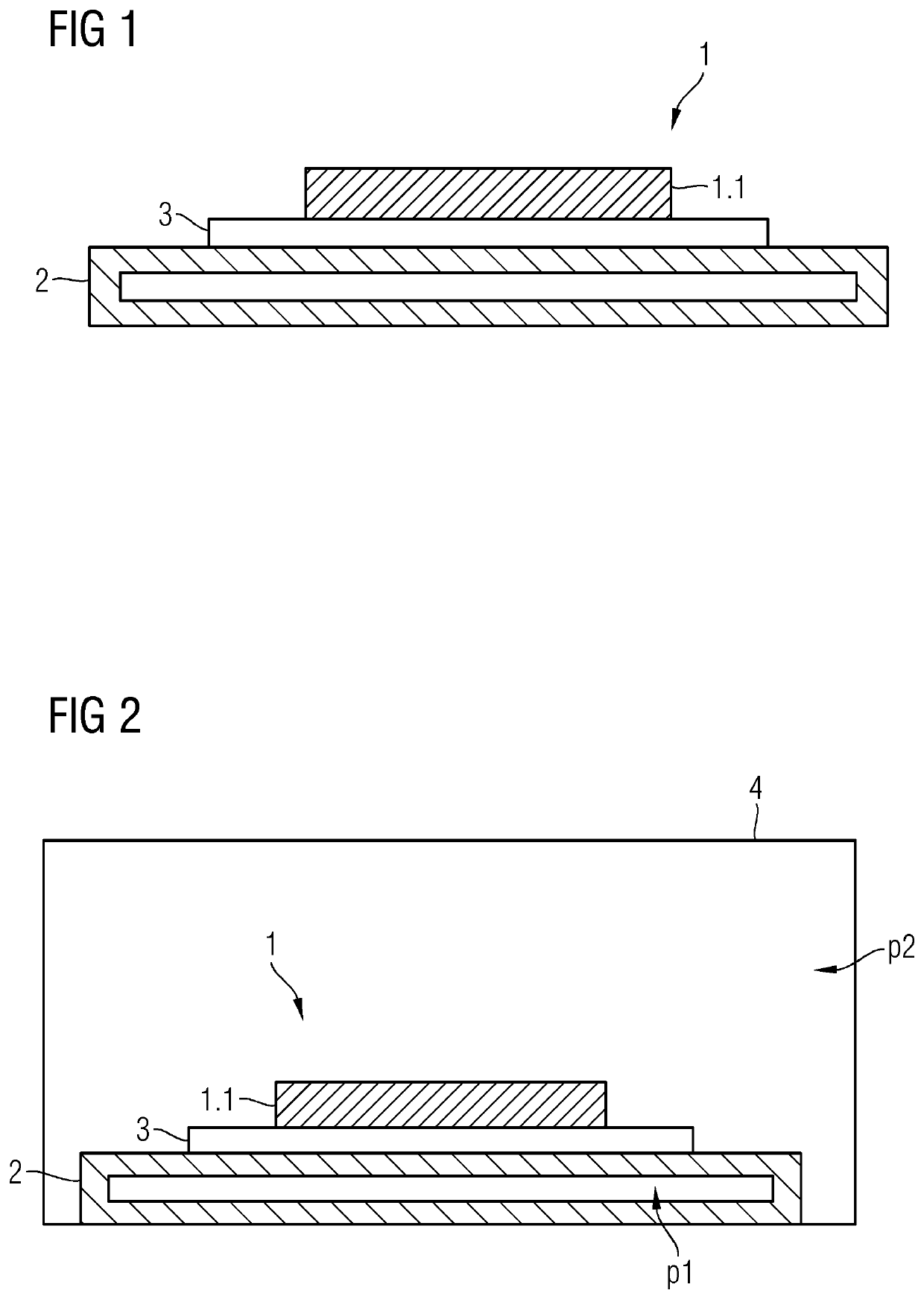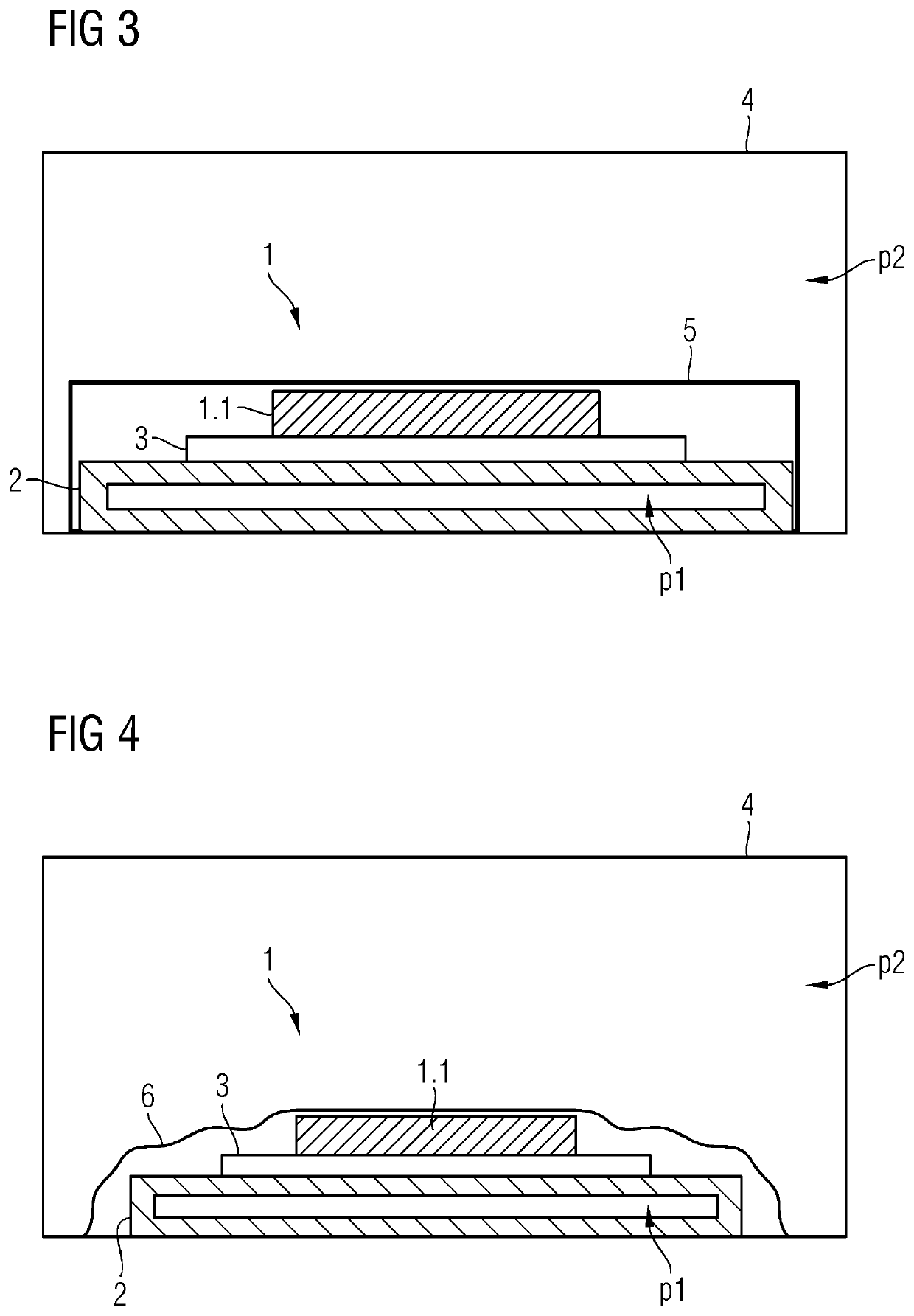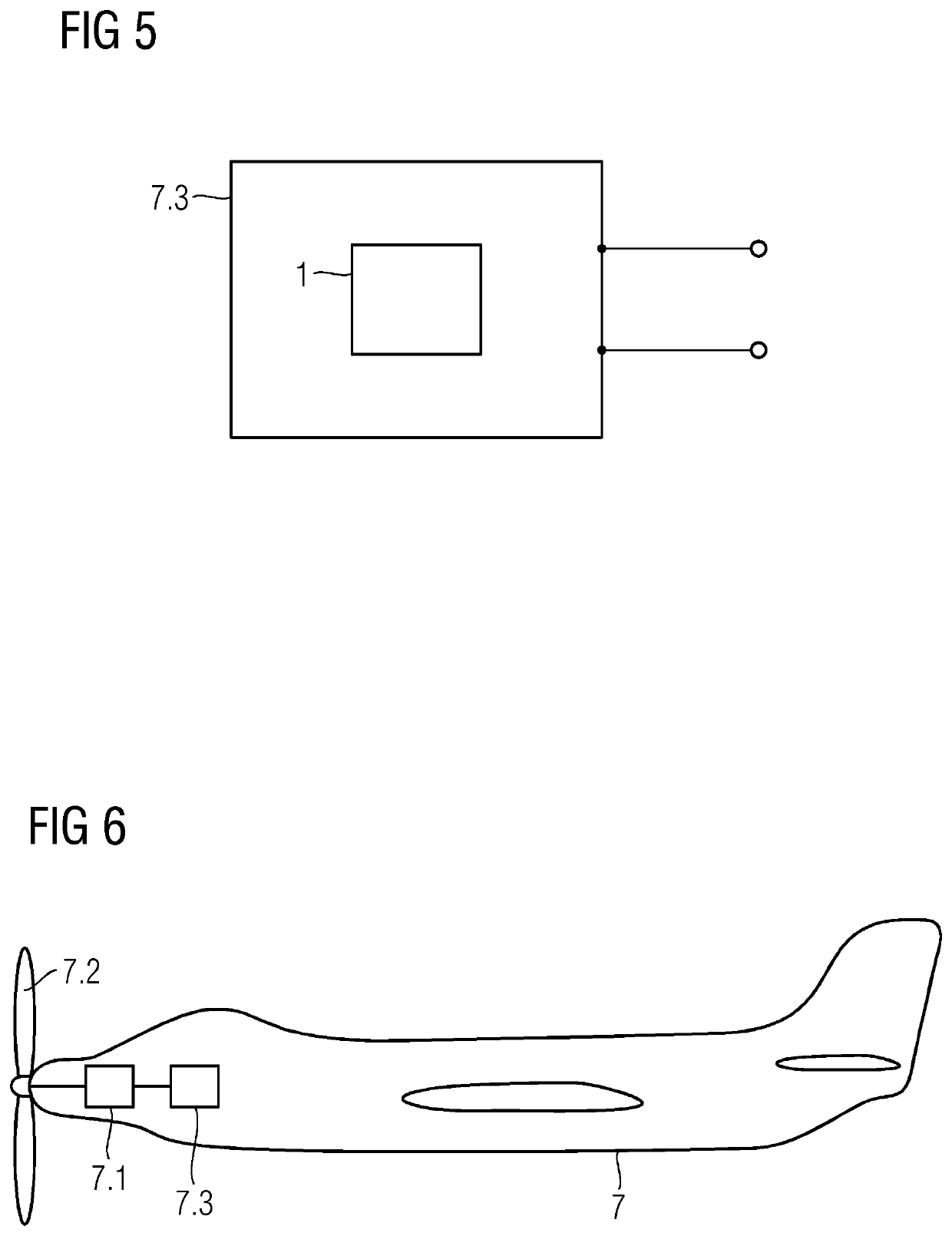Semiconductor component on a heat pipe
a technology of semiconductors and heat pipes, applied in the direction of electrical equipment construction details, indirect heat exchangers, lighting and heating apparatus, etc., can solve the problems of increased internal pressure, deformation or explosion of heat pipes, and the inability to apply temperature-sensitive joining methods
- Summary
- Abstract
- Description
- Claims
- Application Information
AI Technical Summary
Benefits of technology
Problems solved by technology
Method used
Image
Examples
Embodiment Construction
[0042]FIG. 1 shows a side view of parts of a power module 1 of a converter according to the prior art. A plurality of power semiconductor components 1.1 (only one is visible) are joined to a heat pipe 2 with the aid of an integral connection 3 (e.g., adhesive). The heat pipe 2 is used for effective heat dissipation of a power loss of the power semiconductor components 1.1. The heat pipe 2 is, for example, filled with water.
[0043]FIG. 2 shows a view of a device for soldering power semiconductor components 1.1 of a power module 1 to a water-filled heat pipe 2. The integral connection 3 is produced by a solder. In order that an internal pressure p1 in an interior of the heat pipe 2 during soldering does not cause the heat pipe 2 to burst, the soldering operation is carried out in a pressure chamber 4 that builds up an external pressure p2. The external pressure p2 is automatically adjusted such that the internal pressure p1 is always approximately equal to the external pressure p2.
[004...
PUM
 Login to View More
Login to View More Abstract
Description
Claims
Application Information
 Login to View More
Login to View More - R&D
- Intellectual Property
- Life Sciences
- Materials
- Tech Scout
- Unparalleled Data Quality
- Higher Quality Content
- 60% Fewer Hallucinations
Browse by: Latest US Patents, China's latest patents, Technical Efficacy Thesaurus, Application Domain, Technology Topic, Popular Technical Reports.
© 2025 PatSnap. All rights reserved.Legal|Privacy policy|Modern Slavery Act Transparency Statement|Sitemap|About US| Contact US: help@patsnap.com



